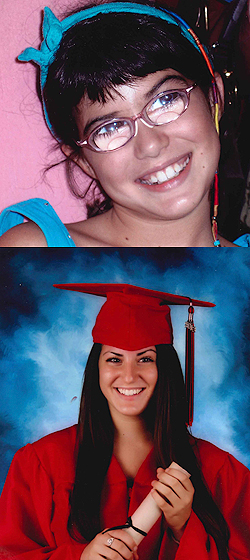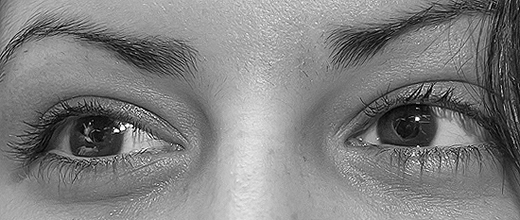Award-winning photographer, sketch artist, guitarist, participant in national conferences, outstanding student and a champion of the underprivileged. These are all attributes of a young woman who, some 18 years ago, had a diagnosis of legal blindness in her future.
Today, her story is far, far better.
You would never know it or see it when you meet Ruthie Sidell that she’s undergone numerous surgeries on her eyes from the time she was a toddler. A gracious, ebullient, multi-talented high school senior, she is perhaps wise beyond her years and has a profound compassion for those less fortunate.
When Ruthie was just weeks old, her parents, with true parental instinct, knew that their baby girl was not seeing properly. That’s when the series of doctor visits began in southern California where they lived.
Ruthie’s mom and dad noticed that their daughter, a premie, was not tracking objects or people in front of her with her eyes. After receiving various diagnoses, they found that their precious baby girl had been born legally blind due to congenital cataracts in both eyes. By the time the correct diagnosis was made, some told them it might be too late to treat. Thankfully, a pediatric ophthalmologist in California saw Ruthie and performed a needed cataract surgery on each eye at three months of age. Following the surgeries, Ruthie then developed glaucoma. It was managed for years with eye drops. During those early years, Ruthie wore contacts, which her parents inserted for her.
Coming to Emory
 | |
| Ruthie Sidell as a child (above) and later as a graduating high school student. |
After moving to Atlanta as a toddler with father Neil, an Emory researcher, and mother Debbie, a high school teacher, Ruthie was ultimately treated by three Emory ophthalmologists. She first saw pediatric ophthalmologist Scott Lambert, who treated her as an "aphakic" patient, meaning without the natural lens in each eye, since the lenses had been removed. Initially, working with Lambert, contact lens technologist Buddy Russell provided specialized contact lenses for Ruthie. As she grew older, Ruthie switched to thick eyeglasses in order to see.
Later, glaucoma specialist Allen Beck treated her for the glaucoma that typically comes with those born with congenital cataracts and the subsequent cataract surgery. In 2003, he put a shunt into her right eye to control the pressure. Her left eye remains as a glaucoma "suspect." Today, he still manages her glaucoma. "It is critically important to monitor children who have had congenital cataract surgery for the development of glaucoma," says Beck. "Glaucoma can be successfully treated, but it requires lifelong follow-up. What a pleasure it is to watch a child overcome her disability and grow up to become a young woman who can not only function in the world, but also thrive and succeed. "
In 2011, when Ruthie was 15, Lambert implanted intra-ocular lenses (IOLs) in her eyes to replace the natural lenses removed when she was a baby. The new lenses provided her with good "uncorrected" vision so that glasses were not necessary except to drive. That, she says, is when her world changed.
"For the first time in my life, I woke up being able to see everything, with near perfect vision," she says. "My world opened up, and I was so grateful."
Ruthie Today
Though her vision is much improved, she still has lingering nystagmus, a condition where the eyes move side to side rapidly, typical in children with her diagnoses. She also had ptosis, a droopy eyelid, which was repaired surgically by oculoplastic specialist Ted Wojno.
Because of Ruthie’s vast experience with diminished vision and feeling different than her schoolmates, she developed a special caring for those with any kind of deficit. She is interested in psychology and childhood mental health and will begin college at Emory in the fall. Her extraordinarily busy high school years have included journalism efforts such as a project exploring the definition of real beauty. She had a placement in the High Museum for a photograph she took of a best friend and participated in a Lead America conference in New York, among other accomplishments.
Ruthie credits her parents for many things, including persistence in getting her vision treated. She also recounts that her mother took her outside every night following her cataract surgery so that she could develop her vision by looking at the moon. The moonlight took, along with her parents’ determination, so that a beautiful girl, inside and out—with light in her eyes—could make her mark on the world.

